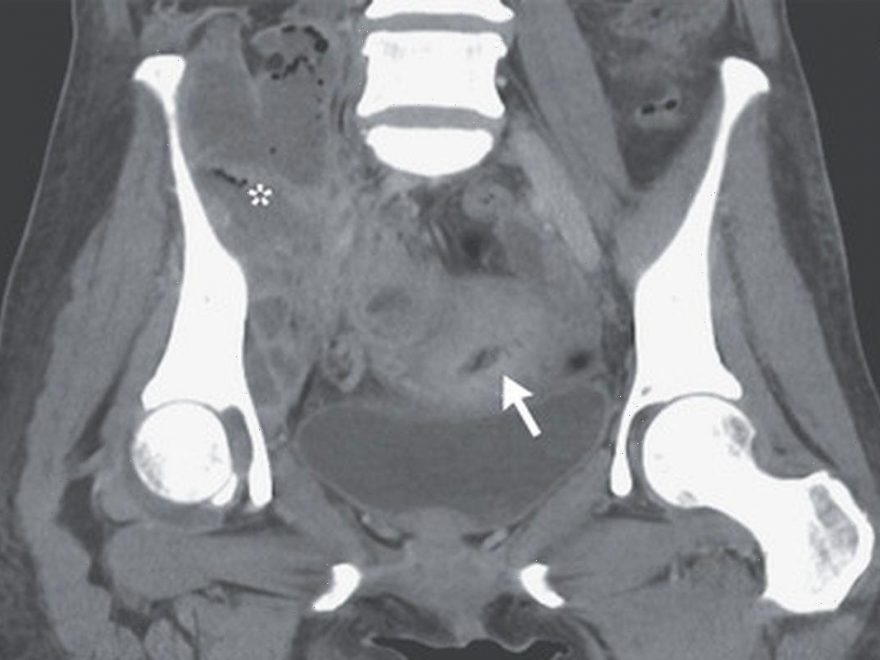A WOMAN was left with abscesses from her contraceptive coil after it had been left inside her for 20 years.
The 54-year-old had been suffering with stomach pains and had been struggling to walk for three weeks before seeking medical attention.


In the three months before being examined, she had also been struggling with a high temperature and had been losing weight.
Her temperature was 38.5C – the NHS considers anything over 38C to be a high temperature, but this can also be detected if your skin is hot to the touch.
Many things can cause a high temperature, but it's usually caused by your body fighting an infection.
When presenting at hospital in Japan, the patient underwent a variety of tests.
Once she had been examined, doctors said it was clear that there was a 'tender mass' in the lower part of her stomach.
She then was sent for a CT scan which revealed an intrauterine device (IUD), also know as the coil, or the copper coil.
The device was surrounded by multiple abscesses which spread throughout the stomach and into the pelvis – they also extended to the left hip joint.
Abscesses are caused by a bacterial infection and can develop anywhere in the body.
This may have been why the patient had been struggling to walk.
Writing in the New England Journal of Medicine medics in Japan said that the patient explained that the IUD had been fitted two decades ago and had not been replaced.
Depending on the brand of IUD it should be replaced between every 7 to 12 years.
The patient was treated at Nakagami Hospital, Okinawa City, Japan.
She had to have the abscesses drained and washed out of the left hip joint.
The IUD was also removed and the experts said this was covered in sulphur-coloured granules.
The patient was given a prolonged course of intravenous antibiotics and was then also given oral antibiotics.
After she completed both courses she no longer had hip pain.
An IUD is similar to the Mirena coil, but the main difference is that an IUD releases copper into your womb, and the Mirena coil releases the hormone progestogene.
The NHS states: "The copper alters the cervical mucus, which makes it more difficult for sperm to reach an egg and survive. It can also stop a fertilised egg from being able to implant itself.
"If you're 40 or over when you have an IUD fitted, it can be left in until you reach the menopause or you no longer need contraception."
What is an IUD?
When inserted corrected, an IUD is 99 per cent effective at preventing pregnancy.
It works by releasing copper to stop you getting pregnant – it is also known as a "copper coil" or "coil".
It is t-shaped and can be put in at any time during your period as long as you're not pregnant.
IUDs can only be taken out by trained professionals and once it's out you can get pregnant straight away.
Are there side effects?
Most medications we take on a daily basis have side effects and IUDs are no different.
The NHS says that you periods can be heavier, longer or more painful in the first three to six months after an IUD is put in.
You might also get spotting or bleeding between periods.
After it's been fitted there is a small risk of infection.
Doctors will also teach you how to check the IUD is still in place as it can move around.
We pay for your stories!
Do you have a story for The Sun news desk?
Email us at [email protected] or call 02077824104. You can WhatsApp us on 07423 720 250. We pay for videos too. Click here to upload yours
Click here to get The Sun newspaper delivered for FREE for the next six weeks.
Source: Read Full Article
